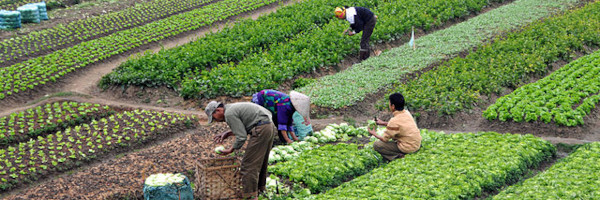Agriculture
Jump to navigation
Jump to search
| Agriculture | |
|---|---|

| |
| Introduction | |
| Contact | Josh Seidemann |
| Topics | |
| NEWS
| |
- Authors
Smart agriculture, also known as precision agriculture or digital agriculture, is the use of technology to optimize crop and livestock production. This can include the use of sensors, drones, and precision farming equipment to gather data on soil conditions, weather patterns, and crop growth, which can then be used to make more informed decisions about planting, fertilization, and harvesting. Additionally, smart agriculture can also involve the use of automation and machine learning to improve efficiency and reduce labor costs. Overall, the goal of smart agriculture is to increase yields while minimizing waste and environmental impact.
Approaches to Smart Agriculture
There are a number of approaches to smart agriculture:
- Precision Farming: This type of smart agriculture uses technology such as GPS, sensors, and mapping tools to gather data on soil conditions, weather patterns, and crop growth. This data can then be used to make more informed decisions about planting, fertilization, and harvesting.
- Regenerative Agriculture: Regenerative agriculture is a holistic approach to farming that aims to improve the health and resilience of soil, plants, animals, and the environment. It is based on the principle that farming should not only be sustainable, but also actively regenerative, meaning it should improve the overall health and fertility of the land over time.
- Organic Farming: this approach focuses on using natural methods to control pests and diseases, such as crop rotation and companion planting, rather than synthetic pesticides and fertilizers.
- Agroforestry: this approach combines elements of farming and forestry, such as planting trees and shrubs alongside crops or animals to improve soil health and provide additional benefits such as shade, windbreaks, and habitat for wildlife.
- Permaculture: this approach is based on the principles of ecology and design, and aims to create sustainable systems that mimic natural ecosystems. It typically involves a combination of gardening, animal husbandry, and land management practices.
- Conservation Agriculture: This approach is based on minimal soil disturbance, maintaining a soil cover with crops, and rotating crops.
- Family Farming: This approach is based on small scale farming, family labor and locally adapted agricultural practices, which is focused on providing food security and income for the farmers and their families.
Technologiies Used
- Autonomous_Vehicles: This type of smart agriculture uses automation and robotics to perform tasks such as planting, harvesting, and spraying, which can increase efficiency and reduce labor costs.
- Internet of Things: This type of smart agriculture uses IoT technologies like smart sensors, drones, and connected devices to gather and analyze data on crop growth and soil conditions, which can be used to optimize crop yields and reduce waste.
- Variable-Rate Technology: This type of smart agriculture involves using precision farming equipment to apply inputs such as seeds, fertilizer, and pesticides at different rates based on the specific needs of different parts of a field.
- Predictive Modeling: This type of smart agriculture uses machine learning and big data to create models that can predict crop yields, weather patterns and other factors that can impact farming operations.'


